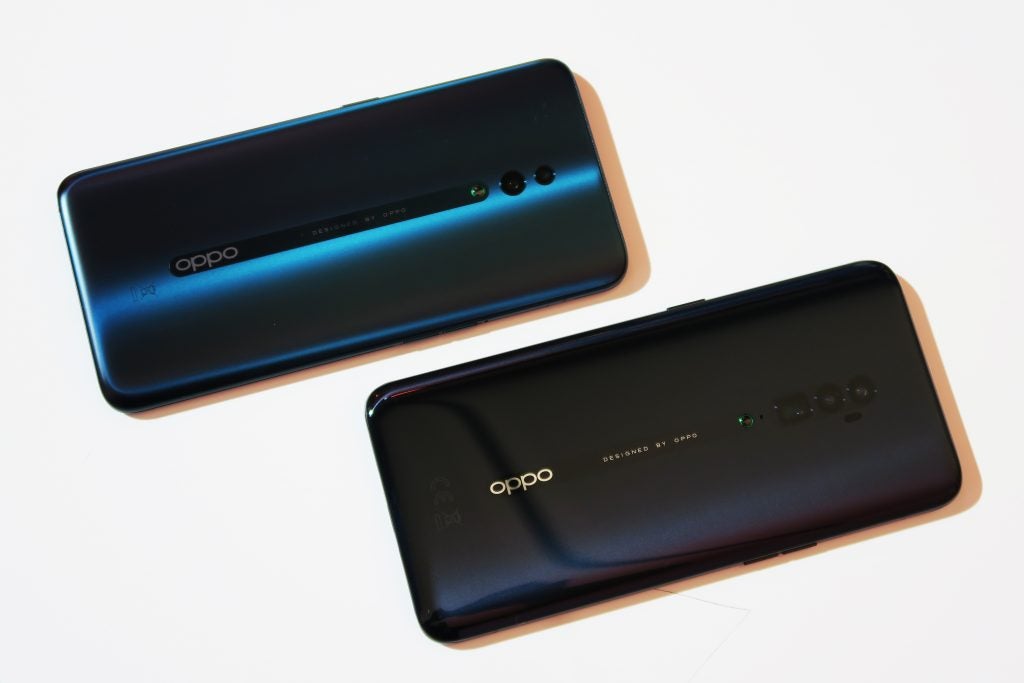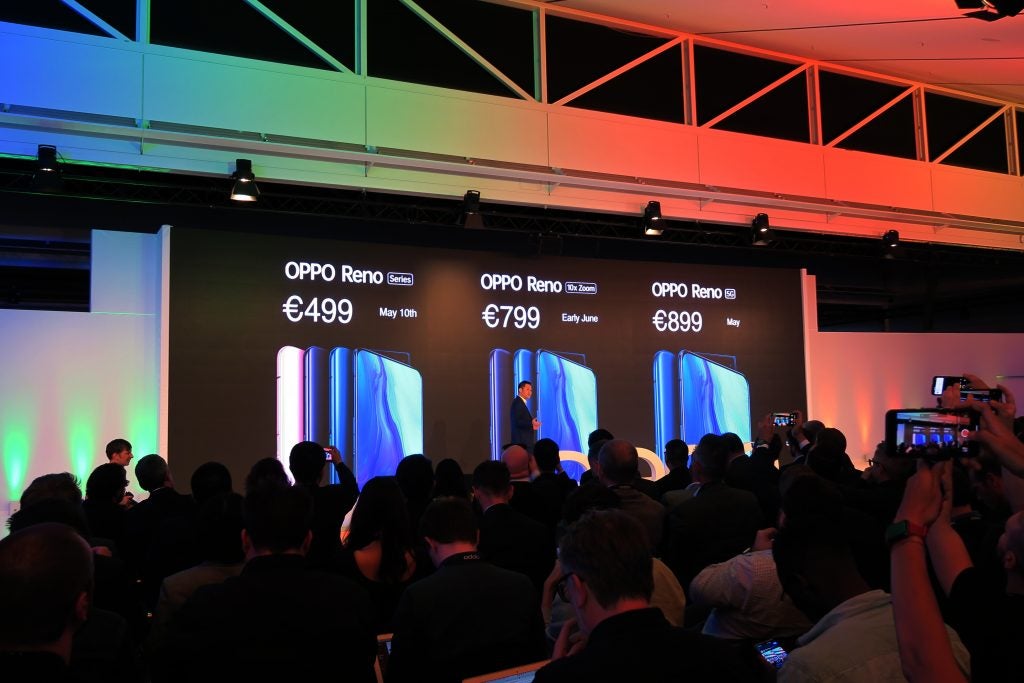What is the difference between all the Oppo Reno phones?

Following a tease with 5G partner Swisscom a couple of weeks earlier, Chinese phone maker Oppo is now finally ready to bring its new Reno flagship phone series to Europe.
Oppo has introduced three new devices which make up the Reno line: the Reno, Reno 10x Zoom and Reno 5G. The Reno 10x Zoom is arguably the true flagship here, serving as a successor to last year’s eye-catching Oppo Find X.
- Read our full Oppo Reno 10x Zoom review • Oppo Reno Z review
What is the Oppo Reno 10x Zoom?
As the name suggests, the Reno 10x Zoom is all about the company’s newly-developed camera array. Just weeks after rival Huawei introduced its new flagship with a 5x lossless zoom camera – the P30 Pro – Oppo has gone one step further with the Reno.
The phone features technology that the company originally showcased earlier this year at its ‘Get Closer’ event during Mobile World Congress in Spain. Like the P30 Pro, the Reno 10x Zoom also features a lossless zoom camera that uses a periscope-style design to mount the 13-megapixel sensor transversely along the phone’s body.
The result is unprecedented lossless zoom (as you might have guessed, it boasts up to ten times magnification) without the need for a protruding motorised zoom lens, akin to the Samsung Galaxy S4 Zoom or K Zoom from yesteryear.
Alongside its periscopic zoom camera, the back of the Reno 10x Zoom also features Sony’s much-talked-about 48-megapixel IMX586 sensor (as also found on the Honor View 20 and Xiaomi Mi 9), while there’s a third ultra-wide angle 8-megapixel snapper with a 120-degree field of view. It’s this 16mm to 160mm focal range that grants the phone its (somewhat clumsy) name.
Related: Best camera phones
Qualcomm’s latest and greatest Snapdragon 855 chipset heads up the internals, paired with 8GB of RAM and 256GB of storage (plus microSD expandability), while the capacious 4065mAh battery should keep things running well into a second day’s use.
What’s more, Oppo’s latest VOOC 3.0 Flash Charge functionality is present and correct on the Reno, granting the phone speedy rejuvenation that’s apparently 23.8 percent faster than the previous iteration, thanks in part to fast trickle charging for the last precious percentiles.

The Oppo Reno (left) and the Oppo Reno 10x Zoom (right)
Related: What is fast charging?
Flip the phone over and you’ll notice that there’s almost no bezel all the way around the sizeable 6.6-inch display, nor is there a notch or a hole-punch camera, as on the Samsung Galaxy S10.
Like last year’s Find X, the Reno features a pop-up camera, however, this time it’s an unusual wedge shape that raises on one side to reveal a 16-megapixel front-facing snapper, paired with an LED soft flash. In fact, should you wish to take a flash photo using the rear camera, you’ll still have to raise the wedge as there’s a secondary LED flash on the back too.
Being motorised, there’s an obvious question mark over reliability here and Oppo has tried to ease concern by stating that the mechanism is guaranteed to operate reliably for at least five years; assuming the wedge were to be actuated 100 times per day. There’s also fall detection so that it should close the moment the phone realises it might be taking a tumble towards to floor.
As for the screen itself, it’s a large, punchy Full HD+ AMOLED panel (with HDR support) that boasts an impressive 93.1 percent screen-to-body ratio. Unlike the Find X, which relied on Face ID-style face unlocking as it’s only means of biometric security, the Reno’s display also integrates an optical fingerprint sensor, so you can just as easily press thumb to glass to gain access.
Other goodies include a trio of microphones, NFC, Hi-Res Audio support and Dolby Atmos and Dolby AC-4 functionality.
What does the standard Oppo Reno offer?
Visually speaking, the standard Oppo Reno closely resembles the 10x Zoom, albeit on a smaller scale as a result of its 6.4-inch Full HD+ AMOLED display. It still totes the same distinct wedge-shaped pop-up ‘pivot rise’ front-facing camera too but beyond that, the recipe is a little different.
Gone is the triple rear camera, including the lossless zoom and OIS (optical imaging stabilisation) of its bigger brother. Instead, the main 48-megapixel sensor is supported by a more conservative 5-megapixel secondary camera, which adds depth data.
Being a smaller device, there’s also a smaller 3765mAh battery onboard and no microSD expandability, however, the phone is also lighter and thinner to boot. Memory and storage top out at the same as the 10x Zoom but there are also more conservative SKUs with 6GB of RAM and the option of 128GB of internal storage available.
The humble Snapdragon 710 SoC runs things, which should still offer competent mid-range-level performance all the same.
To appease the fact that this smaller model doesn’t pack quite the same punch, Oppo has at least supplemented the standard phone’s Jet Black and Ocean Green finishes with two additional purple and pink gradient options; plus there’s a headphone jack.
What is the Oppo Reno 5G?
If you consider yourself the earliest of adopters, Oppo is among the first phone makers to also launch a 5G-capable device in the form of the Oppo Reno 5G. In truth though, it’s essentially the same phone as 10x Zoom with the addition of the X50 5G modem that Qualcomm announced at the tail end of 2018 (alongside the Snapdragon 855).
How much and when can I buy the new Oppo Reno phones?

Here is the European pricing for the Oppo Reno phones and we’ll update the article once we know more UK-specific details.
- €499 for the Reno – May 10th
- €799 for the Zoom – early June
- €899 for the 5G – May (TBC)
EE has also confirmed it’ll be the exclusive carrier for the 5G model when it launches in the UK.
What do you think? Has Oppo done enough to thwart Huawei and its other rivals? Let us know on social @TrustedReviews.


